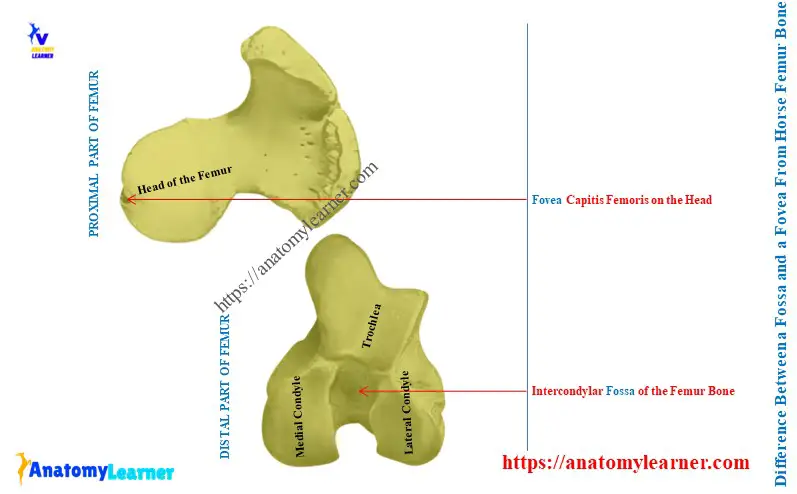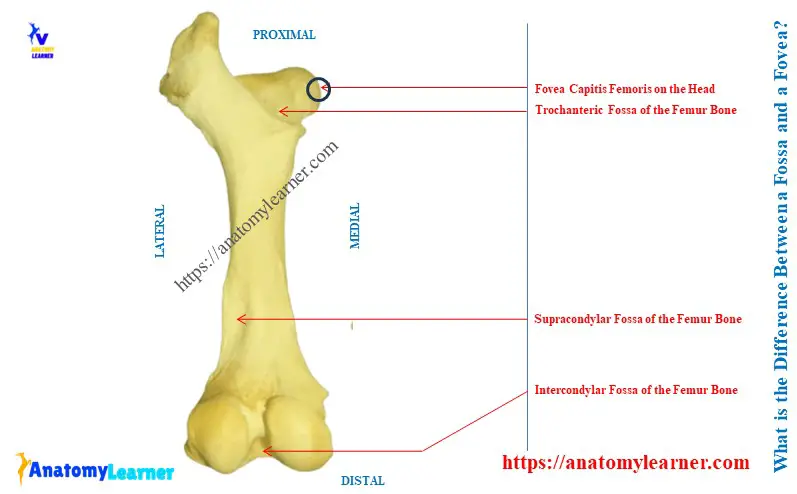The term’ fossa’ means depression, whereas fovea means the articular surface of the bone. Here, you will know the exact answer to the question – ‘what is the difference between a fossa and a fovea?’.
Quick answer and explanation: any depression on the bone is termed as the fossa. The term ‘fovea’ means the pit-like articular surface of the bone.
Here, I will explain the terms’ fossa’ and ‘fovea’ with examples from animal bones. Thus, you will quickly identify the fossa and fovea from any other animal skeleton bones.
Let’s learn the difference between the terms’ fossa, and ‘fovea’.
What is the difference between a fossa and a fovea?
Explanation of the fossa and fovea from bone: the bones of the animal skeleton possess different types of articular surfaces. The fovea term is applied if you find any pit or cavity-like articular surface on any particular bone.
Again, the animal skeleton’s bone may possess different types of depressions. When the bones possess shallow to deep depression, then the fossa term is applied.
Here, the diagram shows the fovea and fossa from the horse femur bone.

The key features of the fossa on a bone are: –
- Shallow or moderate or deep type of depression on the particular bone,
- Provide sufficient areas for the muscle attachment,
- Have no specific shape or form,
Again, the key features of the fovea on a bone are: –
- It is a pit or small cavity-like articular surface,
- Provide articular surface for the bones, cartilage, and ligaments,
- It is in the rounded form,
Examples of fossa on different bones of the animal
- Trochanteric fossa on the caudal aspect of the proximal extremity of the animal femur bone,
- Supracondylar fossa on the distal extremity of the animal femur bone,
- Suprascapular and subscapular fossa on the lateral surface of the animal scapula bone,
- Subscapular fossa on the costal surface of the animal scapula bone,
- Intercondylar fossa on the distal extremity of the animal femur bone,
Example of fossa from specific bone: Here, the diagram shows the features of the proximal and distal parts of the horse femur bone. The caudal aspect of the upper extremity of the horse femur bone shows a deep depression. This is the trochanteric fossa of the horse femur bone.

The lateral surface of the distal extremity shows another depression. It is just above the lateral condyle of the horse’s femur bone. This moderate depression is the supracondylar fossa of the horse femur bone.
Again, the distal extremity of the horse femur shows a small depression between the two condyles. This is the intercondylar fossa of the horse femur bone.
Examples of fovea on different bones of the animal skeleton
- Fovea capitis femoris on the head of animal femur bone,
- Fovea on the dorsal border of the animal scapula bone where the scapular cartilage attaches,
Example of fovea from the femur bone: Here, the diagram focuses on the articular surface of the head of a horse’s femur bone. On this articular surface, there is a cavity-like articular surface. This is the fovea capitis femoris of the head of horse femur bone.

The fovea capitis of the horse femur is notched, whereas you will not find any notch on the fovea capitis femoris of the ox femur bone.
Conclusion
So, ‘fossa’ is any depression on a particular bone. Again, the term ‘fovea’ is the cavity-like articular surface on the specific bone of animal skeletons. The animal femur bone possesses the typical features of the fossa and fovea.

